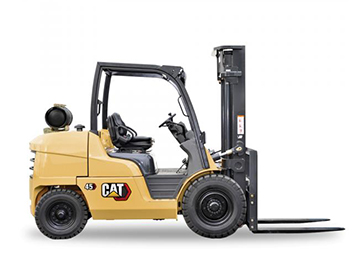When managing a warehouse, selecting the right forklift is crucial for efficient operations and safety. With various types of forklifts available, each suited for different tasks, making an informed choice is essential. For businesses in the UAE, where space and operational efficiency are at a premium, understanding the key factors to consider is even more important. In this blog, we’ll explore the critical considerations when choosing a forklift and why opting for a forklift for rent might be a smart decision.
1. Assess Your Warehouse Layout
Before selecting a forklift, take a close look at your warehouse layout. The design and dimensions of your warehouse will significantly impact the type of forklift that is most suitable for your operations.
Aisle Width
Consider the width of your warehouse aisles. Narrow aisle forklifts are ideal for warehouses with tight spaces, allowing for efficient maneuvering in narrow corridors. On the other hand, if your warehouse has wider aisles, you might opt for a more traditional forklift.
Racking System
Evaluate your racking system as well. If you use high-density racking or have multi-level storage, you’ll need a forklift with adequate lifting height and reach capabilities to handle goods at various heights.
2. Determine Load Capacity: Forklift
Understanding your load requirements is essential when choosing a forklift. Different forklifts have varying load capacities, so you must select one that can handle the weight of your typical inventory.
Weight of Goods
Consider the maximum weight of the items you frequently handle. For instance, if your warehouse deals with heavy machinery or large pallets, you’ll need a forklift with a higher load capacity. Conversely, lighter loads can be managed with smaller, less powerful forklifts.
Safety Considerations
Overloading a forklift can lead to safety hazards and damage to both the forklift and your goods. Ensure the forklift you choose is rated to handle the heaviest loads you expect to encounter.
3. Choose Between Electric and Internal Combustion
Forklifts come in two primary types: electric and internal combustion (IC) engine forklifts. Each has its advantages and disadvantages, so choosing the right type based on your warehouse environment and operational needs is important.
Electric Forklifts
Electric forklifts are ideal for indoor use, especially in environments where air quality is a concern, as they produce no emissions. They are generally quieter and require less maintenance than IC engine forklifts. If your warehouse is well-ventilated and you need a cleaner option, electric forklifts are a great choice.

Internal Combustion Forklifts
IC engine forklifts, powered by diesel, gasoline, or propane, are suited for outdoor use and in environments where power outlets might be limited. They offer higher lifting capacities and are more rugged, making them suitable for rough terrain or heavy-duty tasks. However, they do produce emissions and may require more maintenance.
4. Consider Lift Height and Reach
The lift height and reach of a forklift are critical factors, particularly if your warehouse has high shelves or racks.
Lift Height
Determine the maximum height you need to reach for storing and retrieving goods. Forklifts come with various lift height options, so select one that meets your requirements without exceeding what’s necessary. Excessive lift height can lead to increased costs and complexity.
Reach Capabilities
If your warehouse layout includes deep racks or requires extensive reach, consider a forklift with reach capabilities. Reach trucks or order pickers might be more suitable for environments where you need to access goods stored at significant depths or heights.
5. Evaluate Your Budget and Rental Options
Finally, consider your budget and whether purchasing or renting a forklift is the best option for your business. Renting can offer flexibility and cost savings, especially for businesses with fluctuating needs or short-term projects.
Cost of Ownership vs. Rental
Purchasing a forklift involves upfront costs and ongoing maintenance expenses. Renting a forklift, on the other hand, can be more economical if you need it for a short period or want to avoid maintenance costs. For businesses in the UAE, where rental options can be highly competitive, exploring forklift for rent options might be a wise choice.
Flexibility and Upgrades
Renting allows you to choose the latest models and switch between different types of forklifts as your needs change. This flexibility can be particularly beneficial in a dynamic market like the UAE, where adapting to new technologies and operational requirements is crucial.
Conclusion
Selecting the right forklift for your warehouse involves evaluating several key factors, including warehouse layout, load capacity, forklift type, lift height, and your budget. By carefully considering these aspects, you can ensure that you choose a forklift that enhances efficiency and safety in your warehouse operations.
If you’re looking for reliable and flexible forklift solutions in the UAE, consider Al Bahar. As a leading heavy equipment provider, Al Bahar offers a wide range of forklifts for rent and sale, backed by exceptional support and service. Whether you need a short-term rental or a long-term solution, Al Bahar’s extensive fleet and expertise ensure that you get the right equipment for your specific needs. Explore your options with Al Bahar and experience the benefits of working with a trusted provider in the UAE market.
Thanks Storysupportpro.Com for this blog!


